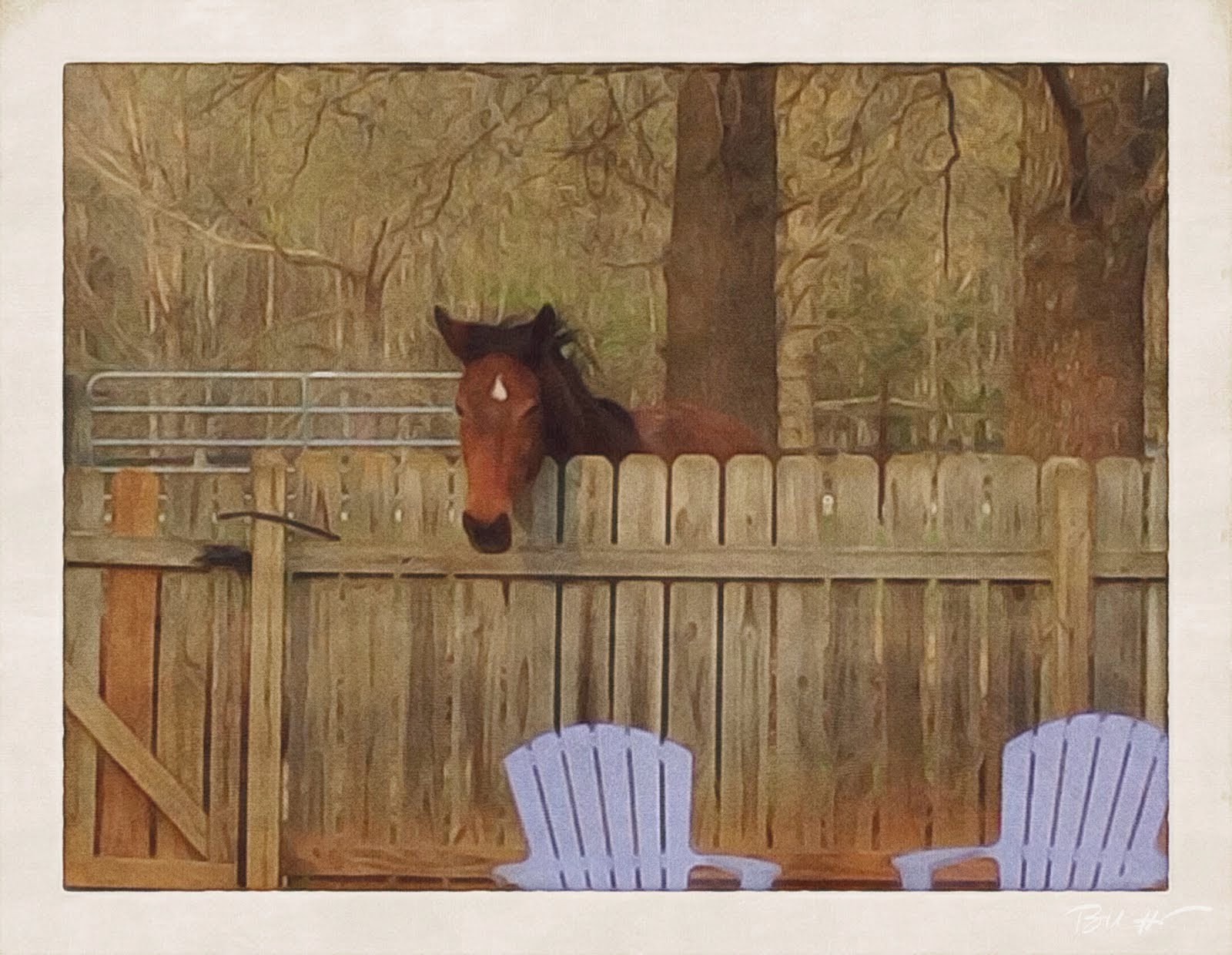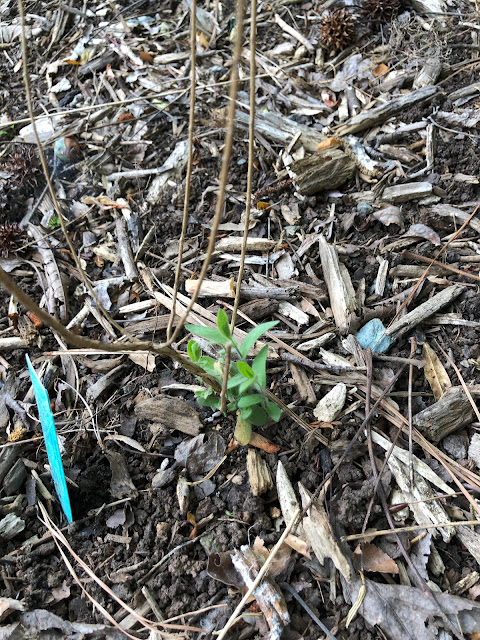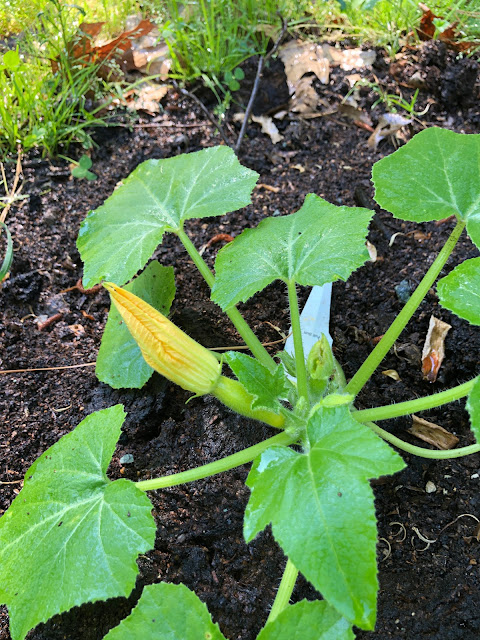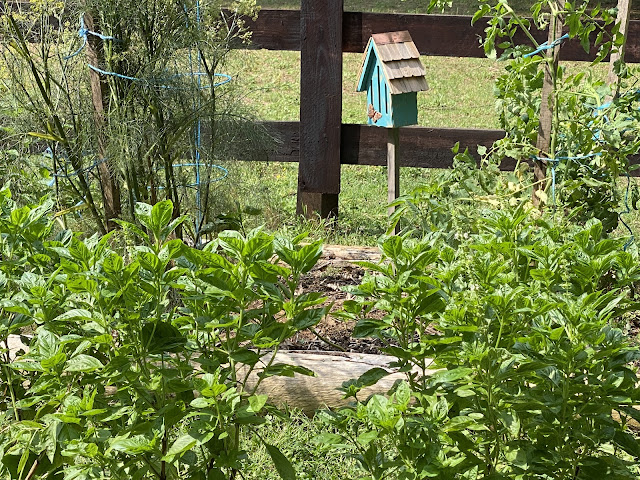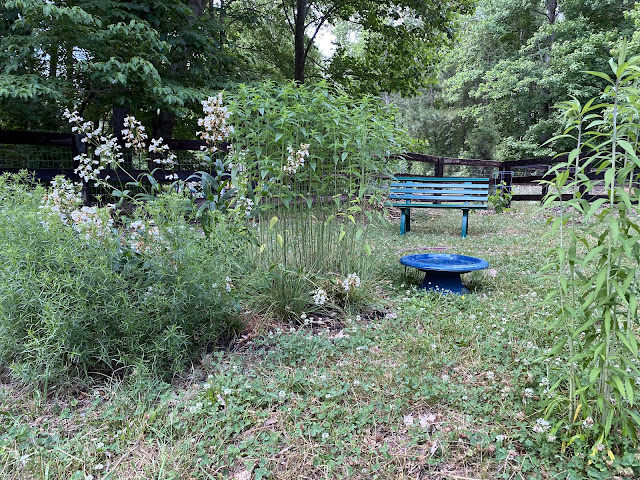I realized today while in the potager that it has almost reached the initial vision I had of it way back when it was still just the far end of the “dirt paddock” with gates leading to front and back pastures. The gates were attached to the perimeter horse fencing, and in order to go from the barn to either pasture out of the main paddock, the herd had to go through the gates at that very edge of our property.
I wanted a buffer zone between horses and neighbors, and I wanted some screening as well. I don’t know when the idea popped into my head that we could move the gates up closer to the barn, and to get that end zone buffer, I could fence off a section of the paddock and use it for my own purposes. The dogs were tearing up our seasonal vegetable garden in the back yard, and the notion of an outlying potager was born.
This is how it looked the day we had the fencing off of the space done:
It was fairly barren most of the year because of the hoof traffic going through on a daily basis. Once we fenced it off, it began to fill in with various pasture grasses and other volunteers. My goal initially was to let the ground heal from the traffic, and use some cedar pieces we had from a dead tree to create vegetable beds. I also tried to use things we had on hand - old tomato stakes, hay bale twine, etc. I prepared these beds by putting down cardboard, compost, a layer of fallen branches picked up from the pastures, and then more compost. All our compost comes from our “grandfather” manure pile, so we have access to very mature compost almost all the time.
The first year was a simple vegetable garden but we got a huge amount of produce. And when working in the potager, right from the beginning, I often had company.
Redford is shyer than Rafer Johnson, but he has attached himself to me since Salina died and he almost always leaves the herd to come to wherever I may be working when I’m outside. He’s not one for being “snuggled” but his company is very sweet and I get the sense that he would help me if I needed it.
That first year and on to the next, I added things to the potager as I had time. More vegetables, and a few natives. The first two natives I put in were American hazelnuts, one on each of the back corners of the space. My hope is they’ll grow large enough to act as screening and as they mature, will provide some nuts for us. One of my most memorable dinner party desserts one year was raspberries from our garden on top of homemade roasted hazelnut ice cream. I’d love to recreate that with our own hazelnuts one day. One hazelnut thrived the first year and the other seemed to die, but I kept it in the ground through that winter, watered it as if it were alive, and in fact, it was. They are both much larger and doing well. Almost as tall as I am now.
The second year I considered putting one of our bee hives in the potager and placed the empty hive there for a month. I know people keep horses and bees in much closer proximity than we do without any issues, but I kept wondering what would happen if the bees became territorial in the potager. I eventually moved the hive boxes down to our main apiary and as of today, we have 5 thriving colonies, which is another update I will do in the next few weeks.
All the native flowering pollinator plants have done quite well in the potager. I put some African basil and bronze fennel (not natives!) in one of the veggie beds and we had quite a showing of swallowtail caterpillars and chrysalis. They devoured the fennel and the bees love the African basil. Since many of the vegetables we plant for produce are not native, I opted to only plant native flowering plants in the potager instead of using non-native cutting flowers as is commonly done. We enjoy our seasonal vegetable garden and many of our favorite summer meals depend on the fresh from the potager produce we grow. We also belong to a local CSA for a larger variety of vegetables that I don’t make the effort to cultivate.
The third year I added in a few elements that are not living but made the space more appealing and offered a place to sit. I enjoy the space quite a lot. It’s peaceful, so full of growing things, and I enjoy being right in the middle of the horse pastures where the equines are often close by grazing and sometimes lining up hoping I’ll let them in with me.
This year and this week I’m seeing the realization of the potager project. Everything perennial that I’ve planted previously is thriving. We haven’t planted as many vegetables this year, but that will change from year to year depending on our food needs and wants. I have a multi-season variety of native pollinators that bloom in all but the deepest winter months. The potager has become a home to many insects, bunnies, squirrels, black snakes, and birds who seem to enjoy it along with me. It’s a small haven on our little farm.
This year we added a third trellis and have planted blackberries there, and as you see in the photos I allow the grasses and white clover to grow on the parts I’m not yet using. I use a small electric weed-eater to keep them from taking over, but I usually leave a large area undisturbed to provide some cover for any wildlife that needs it. I’ve started a small compost pile inside the potager, incorporating any brush, fallen branches, and the occasional wheelbarrow of manure from the herd. I generally don’t turn the compost piles, as we have so much compost I don’t really need the quicker turnaround that turning offers, but it would be easy enough to do if I wanted to generate compost inside the potager for use there each season.
I’ve included a photo of the one morning this month when the potager was invaded by bandits. In the end, they did no damage, and I feel like they made their own potager dream come true that morning, aided by my forgetting to latch the gate the day before.
There are more things to plant here, of course. I’d love to add an asparagus bed at some point, and I’ll add more native flowering plants, including milkweed to support the monarchs. I have a mason bee house that I need to install, and I have an idea to use some wire panels we have to create a sort of arbor over the bench. A couple of native blueberry bushes might be nice too. As the perennial natives grow, the screening will increase, and eventually it will be even more protected, even more the little buffer haven space I saw in my mind’s eye.
I tend to focus on the things I want to do on the farm, and decided this week to focus at least some energy on updating the things that are mostly completed. It’s nice to go through photos and create albums, then blog posts to chronicle the projects from beginning to end. Though we all know that anything involving living things will grow and change, and I look forward to how the potager will continue that very interesting process. This is one of those projects where I feel very strongly that I’ve made it into something much better than I found it.
